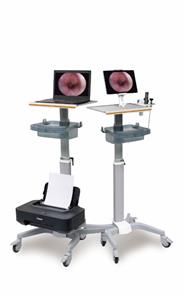Comparative study of spinal endoscopic surgery and total laminectomy in the treatment of cauda equina syndrome caused by lumbar disc herniation
To compare the clinical effects of percutaneous endoscopic lumbar discectomy (PELD) and total laminectomy for the treatment of cauda equina syndrome caused by lumbar disc herniation. Methods: The follow-up data from May 2015 to January 2017 were retrospectively analyzed, and the data of 43 patients with cauda equina syndrome caused by lumbar disc herniation treated by endoscopic surgery or total laminectomy were retrospectively analyzed. According to different surgical methods, they were divided into endoscopic surgery group (PELD group) and total laminectomy group (vertebrotomy group). There were 21 cases in the PELD group, including 14 males and 7 females; their age was (42.67±9.70) years old. Vertebrotomy group had 22 cases, 16 males and 6 females; age (44.55±9.36) years old. The curative effect was evaluated by the modified JOA "leg-trunk-bladder" score. Results: The operation time and hospitalization days of the vertebrectomy group were significantly longer than those of the PELD group, and the difference was statistically significant. The postoperative JOA scores in the two groups were significantly improved compared with those before the operation, and the differences were statistically significant; there was no statistically significant difference in the JOA scores between the two groups before operation, 6 months after operation, and 1 year follow-up. There were 1 case in PELD group and 1 case in vertebral section group with exacerbated cauda equina symptoms after operation, and the immediate postoperative effect was satisfactory. Conclusion: Endoscopic surgery and total laminectomy have similar short-term and mid-term curative effects in the treatment of cauda equina syndrome caused by lumbar disc herniation. Endoscopic surgery was significantly superior to total laminectomy in reducing operative time, hospital stay, and trauma.




